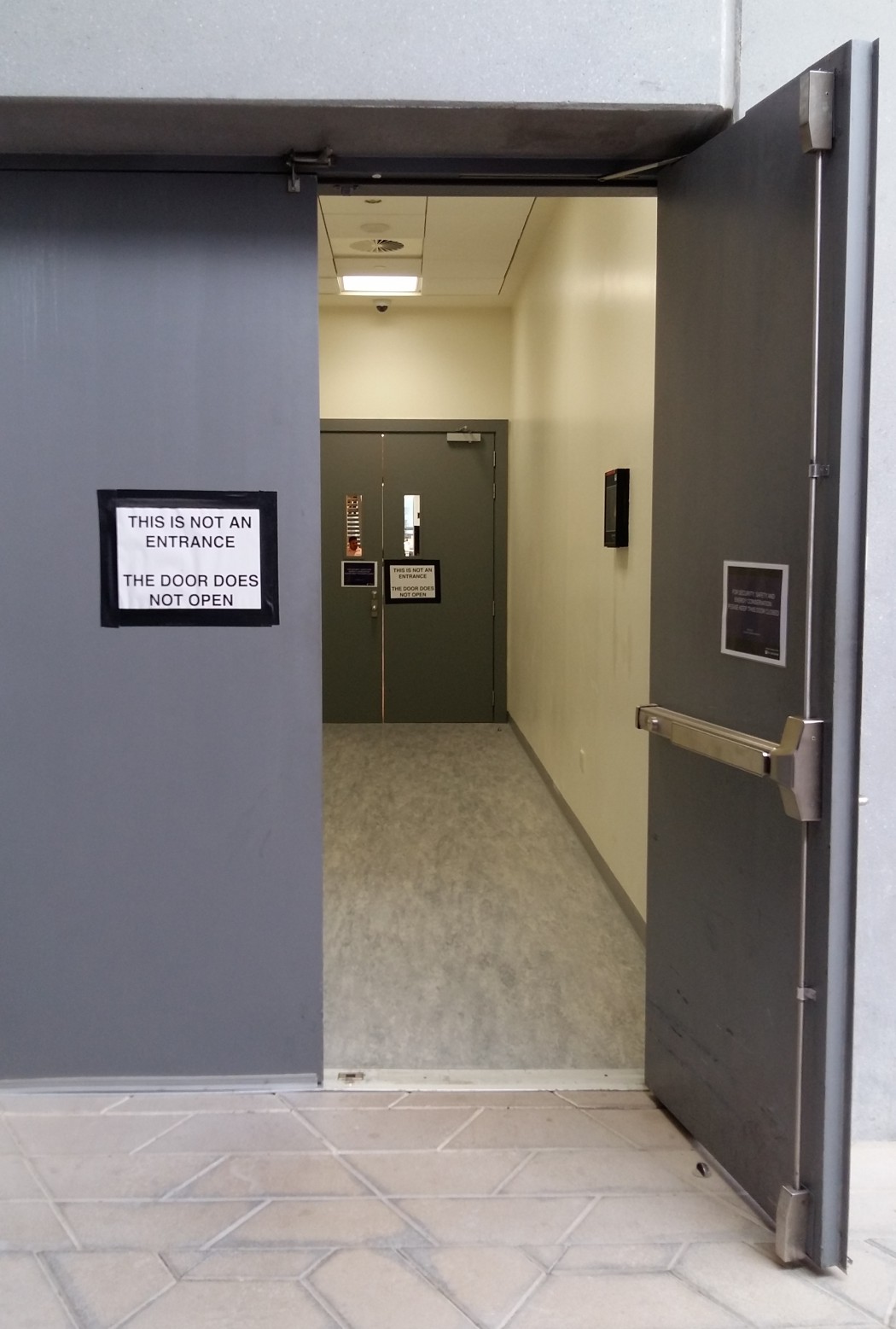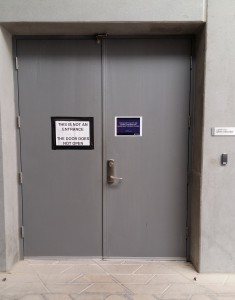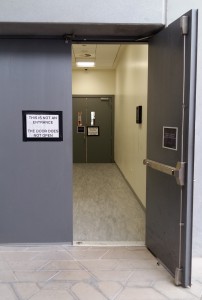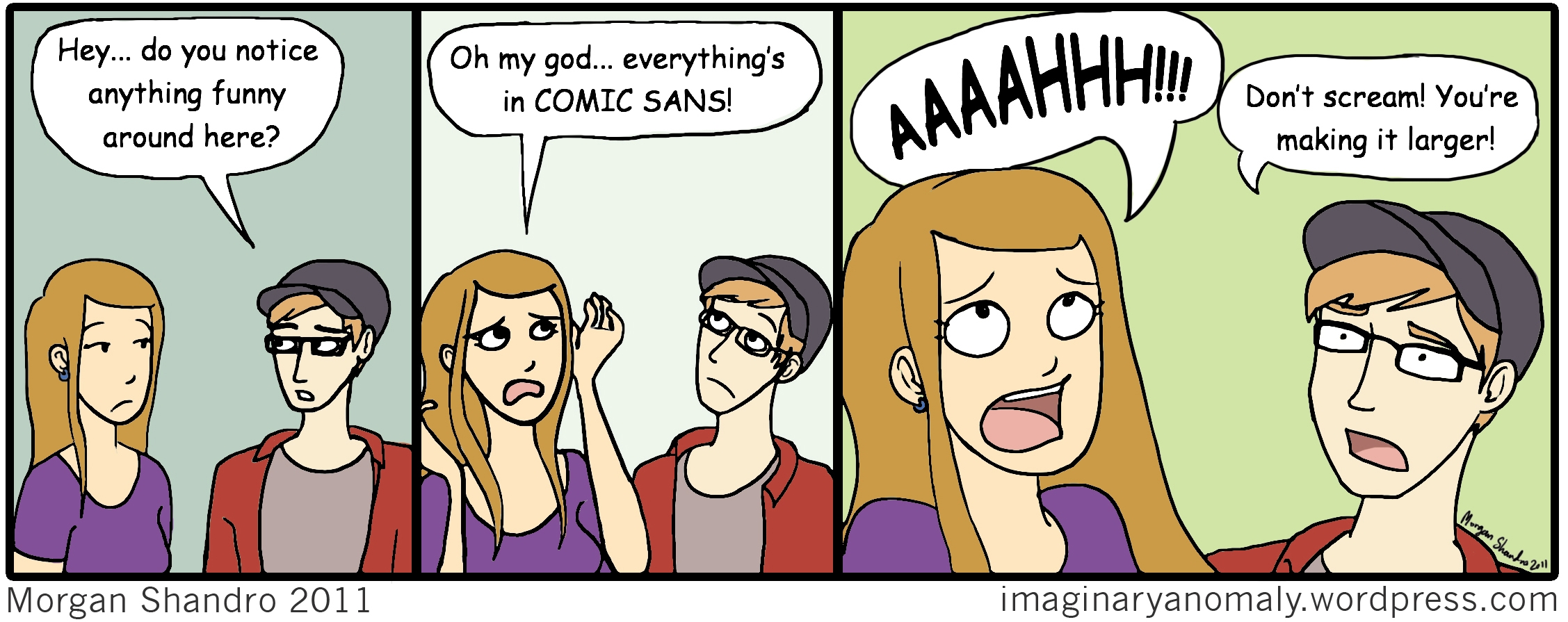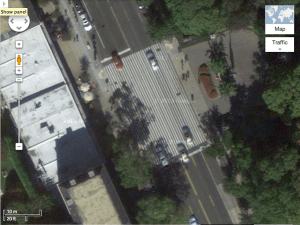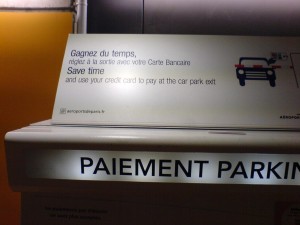In our campus in Abu Dhabi, accessing a building via a five minutes walk can be a very pleasant experience during winter; and a really challenging one in the hot summer months. This is why users have naturally found ‘desire paths’ among buildings: from back alleys to back alleys and so on. Basically a desire path is the shortest or most practical route between an origin and destination.
In the Spring 2015 my Wayfinding Class conducted a survey among the users of our Arts Center and found that one of the main requests was to facilitate the access between the Arts Center and the adjacent Campus Center: the service door in the photo does just that, providing a direct path between the two buidlings, minimizing the outdoor path.
Unfortunately that obvious desire seemed to contradict some preconceived ideas on where the desired paths on campus should be; instead of following the users requests (my mantra: the user is always right) some administrators resorted to Surrealism, as the ultimate weapon against logic and user centered design. Behold the sign on the open door: “this is not an entrance. This door does not open”. But in reality that is a perfectly valid entrance – actually the users’ favourite one – and yes the door does open.
I assume Magritte would have loved it.

